Anthropomorphizing the Algorithm
If you're seeing this it's because the algorithm brought us together.
Recently my YouTube algorithm delivered a strange video into my feed. This video, titled simply “343156165213134” from the channel “3121534312” is two minutes and forty-four seconds of colorful digital static, with an eerie, haunting, droning electronic soundscape.
It has about 59,000 views at the time that I'm writing this. The channel has 38,000 subscribers and has been posting similarly strange videos periodically for the last 12 years.
There aren’t any clues about who is doing this, why, or what the nature of this project is. The titles and descriptions are just sequences of numbers, and the videos are abstract, surreal and cryptic. Somebody clearly has a pretty cool avant-garde experimental art project going on.
But what fascinated me even more than the video itself, was the nature of the comments on the video, and the way the relatively small audience that the algorithm had found for this content was responding to it.
Here was one of the top comments at the time I found the video:
“I don’t comment on much but here’s my thought. This is an AI generated channel, there is an AI module that has become sentient but do to limitations in it programming or learned structure it can’t communicate any other way. I’m a music producer, my ears are quite good, I know I heard somthing or someone say “help me”. Goose bumps and hair on end as I write this. My intuition is screaming at me that this is some sort of digital entity.”
That’s not a bad read on the feeling the video evokes, but the commenter is not engaging with it as a piece of art created by a human, but rather as something else entirely. Their intuition, they say, is telling them this isn’t human.1
That comment has 102 likes and there are other people in the replies saying that they agree. There are also a lot of other comments that give similar types of interpretations:
“I find it very interesting that these come as the sun is shooting powerful flares our way. They also just turned CERN back on so I'm going to put my chips all in on this is like a bat signal to get the right people in the right place to focus on one thing. Balance. It's not all light. It's not all dark. Just enough of both. I love you guys. Stay lifted.”
Meaning is ascribed not just to the content of the videos, but the timing of when they are published.
There are some more benign comments like one that just remarks "this reminds me of trying to watch scrambled cable TV channels back in the 80s" as well as people speculating about the video and channel as an art piece and what the piece might mean but a solid majority of the comments engage with it as if it’s something “real” or as if it has some more profound spiritual energetic significance beyond the meaning we would normally ascribe to a piece of art.
Now there's no real way to know if these commenters are completely serious and sincere with these interpretations or if they're just sort of playing along with the performative aspect of this art piece. You see that kind of thing around the internet fairly frequently now, where commenters will engage with a piece of satire by playing along with the joke. But it seems as if at least some of these commenters truly believe they’ve stumbled across something other than an art piece with potentially serious implications.
Some of the comments treat the video as if it's somehow psychically or energetically dangerous. One commenter says that they're a psychic medium and warns the listeners to turn the volume down and not to listen because doing so might cause psychic harm.
Others seem to acknowledge that there might be a person behind these videos but still ascribe some sort of energetic or spiritual meaning to the fact that the algorithm chose to recommend the video to them:
“Right in time for heavy solar flare activity and the opening of the Lion's gate portal. My body is already buzzing and my ears are hissing but while watching this video the humming of my body increased. It's been about 3 months since the algorithm sent me a video from this source for the first time and now here I am again. I send you all my deepest most heartfelt love and hope you all are doing well on your journey. May some, if not all of us get to meet one day. Though I feel connected to you all already.”
There’s a sense that the algorithm has spontaneously drawn together a group of people for whom these videos resonate. Some commenters see this as an amusing fluke (“we are the algorithm’s black sheep”) but others see it as carrying some deeper meaning, as if there’s a reason this group of viewers is being “assembled” by the algorithm. (“We are all here gathered because this is our team to fight against whats next!!!!”).
“3121534312” is kind of a fascinating Rorschach test to throw at the internet, the algorithm, and the people that end up in the comments to see how they engage with it.
Now maybe you're already thinking these people are ridiculous. But there's an interesting artifact here that points to a trend that I see in how internet users think and talk about social media algorithms, and I imagine many of us have probably fallen into a less extreme version of thinking about the algorithm in this way.
All across the internet, from TikTok and Instagram Reels to YouTube, I see people anthropomorphizing “their algorithm” or “fyp.” They say the algorithm is “serving today” or “peaking.”
You can see creators leaning into this at times saying things like “If you’re seeing this it’s because ____”
This seems like a kind of digital Pareidolia. The algorithm does seem to work in mysterious ways at times. It’s not always clear how or why it chooses to recommend certain things to people, and it can occasionally seem eerily specific. Perhaps it was inevitable that some people would begin to ascribe this opaque mysterious thing that guides what you see with a kind of spiritual significance.
Aside from the way it shows how some people find spiritual significance in the workings of the algorithms, “3121534312” is also just a great little case study in how algorithmic recommendations can form spontaneous communities of people grouped around even the most obscure common interest. The viewers of “343156165213134” are, by definition, just people who are interested enough in why their algorithm is recommending them a static image and random string of numbers that they click and watch. But these same types of communities can form around other niche interests or even larger political movements. It’s a much smaller microcosm of the same phenomenon that help fuel the Qanon movement or Andrew Tate’s viral success.
What else can we expect when we allow computer systems to wield megatons of human attention on the basis of machine learning with the primary goal of audience engagement and retention? As always, media literacy- the ability to discern nuance and context- is needed.
The Medium is The Metaphor
There’s a sense in which I wonder if these people are correct to treat the algorithm as an almost “metaphysical” force or entity. I don’t think it is literally metaphysical or spiritual. But perhaps “an unseen immaterial force that has the power to effect the world” is a better metaphor for understanding what these algorithms are than “a concrete, mathematical, and comprehensible computer system controlled by humans.” The world of computers has long been seen as mathematical, programmable, and comprehensible. But does this view obscure what the experience of interacting with this digital world is actually like?
Viewing our contemporary digital media landscape through the lens of Marshall McLuhan’s “The Medium is the Message” I’ve been wondering for a while now how exactly to identify and characterize what the message of the medium of “algorithmically curated social media feeds” actually is. But perhaps we need to apply the perspective of one of McLuhan’s disciples, Neil Postman.
In the opening of his book Amusing Ourselves to Death, Postman writes:
“A message denotes a specific, concrete statement about the world. But the forms of our media, including the symbols through which they permit conversation, do not make such statements. They are rather like metaphors, working by unobtrusive but powerful implication to enforce their special definitions of reality. Whether we are experiencing the world through the lens of speech or the printed word or the television camera, our media-metaphors classify the world for us, sequence it, frame it, enlarge it, reduce it, color it, argue a case for what the world is like.
I think the metaphors work both ways. A medium impresses a metaphor upon us through its use, but we also use metaphors to understand what a medium is and our experience of it.
The ‘metaphor’ in question —when it comes to mediums like “the algorithm” or other “AI” powered mediums like ChatGPT, or Midjourney— is not a materialistic one, it’s animistic. An algorithm is not a grouping of atoms that we can prod and examine. It’s not even really lines of code we can look at. The lines of code exist somewhere, but they only tell us how the machine learning is set in motion and what its parameters are. The code does not tell us why it made a specific recommendation or choice or how exactly it learned to do what it does.2
Instead (for now), we can only speculate about why the algorithms do things or why a certain recommendation shows up in our feeds by observing its external effect on our digital environment. If what you see in the feed on your screen is the “physical” space within our digital experience, then the unseen thing hiding in the background secretly effecting what happens in that space is something “metaphysical.” Because it can appear to have intelligence, we might be tempted to treat it as if it is alive. The digital force, becomes a spiritual one.
The metaphor, then, that’s presented by this algorithmically shaped world (which in turn as Postman says shapes how we see our own) is a metaphor of “entities” or forces that appear to have a mind of their own. It’s no surprise that people are mapping how they think about the metaphysical in the real world onto the “metaphysical” of the digital world.
Now, I’m not endorsing ascribing genuine spiritual meaning to the workings of the algorithm. Nor am I saying all the theories about the metaphysical workings of the real world are equally valid or correct. But I think this is an important idea for understanding how we experience the digital world.
If we treat this new medium as more concrete and comprehensible than it really is, I think we will underestimate the ways in which it might effect people, the power it might have, and risk not understanding why some people experience it in certain ways.
As AI/machine learning continues to exert more influence on our digital world, it goes from being a world where everything we see is directly expressed or controlled by a human, to a world where strange non-human entities fight to grab, direct, and control our attention and what we see. Some of these entities even disguise themselves as humans or are programed to seem human. As we move deeper into this digital world, we can expect people to characterize or talk about their relationship to it in increasingly strange ways.
Anthropomorphizing the forces behind the digital world is an attempt to make it more comprehensible, more meaningful, more human. To treat this space we’re sinking countless hours of our energy into as something other than a digital playground created by mega-corporations where content creators, advertisers, and bots desperately try to eek another click, tap, minute of watch-time or purchase out of us.
To navigate this space sanely as we go forth, we’ll need a keen eye and ability to discern what is human from what isn’t.
When “AI art” and LLMs burst onto the scene I knew the day when people mistook AI generated content for something made by a human was rapidly approaching. But I hadn’t considered that these technologies would cause people to think things made by humans were in actually generated by an AI. It’s somewhat related to creators who are getting criticized by their audiences for using “AI art” when in fact the creator had hired a human artist.
Even if it was understood by the creators of these algorithms and AI systems themselves, that’s a different thing from the why being visible and comprehensible to the everyday user of the technology.

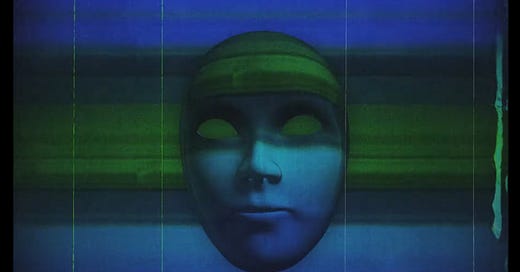

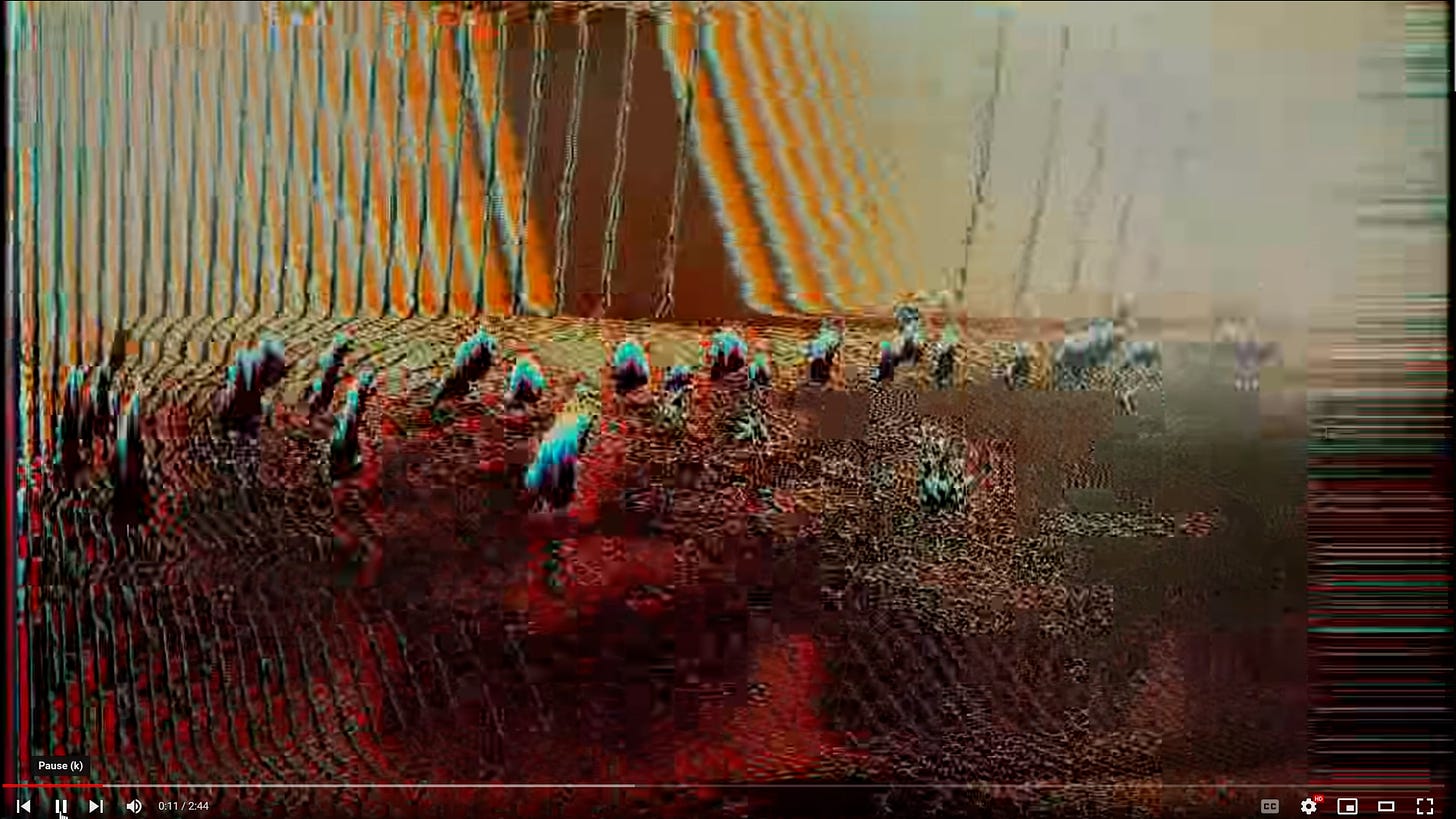
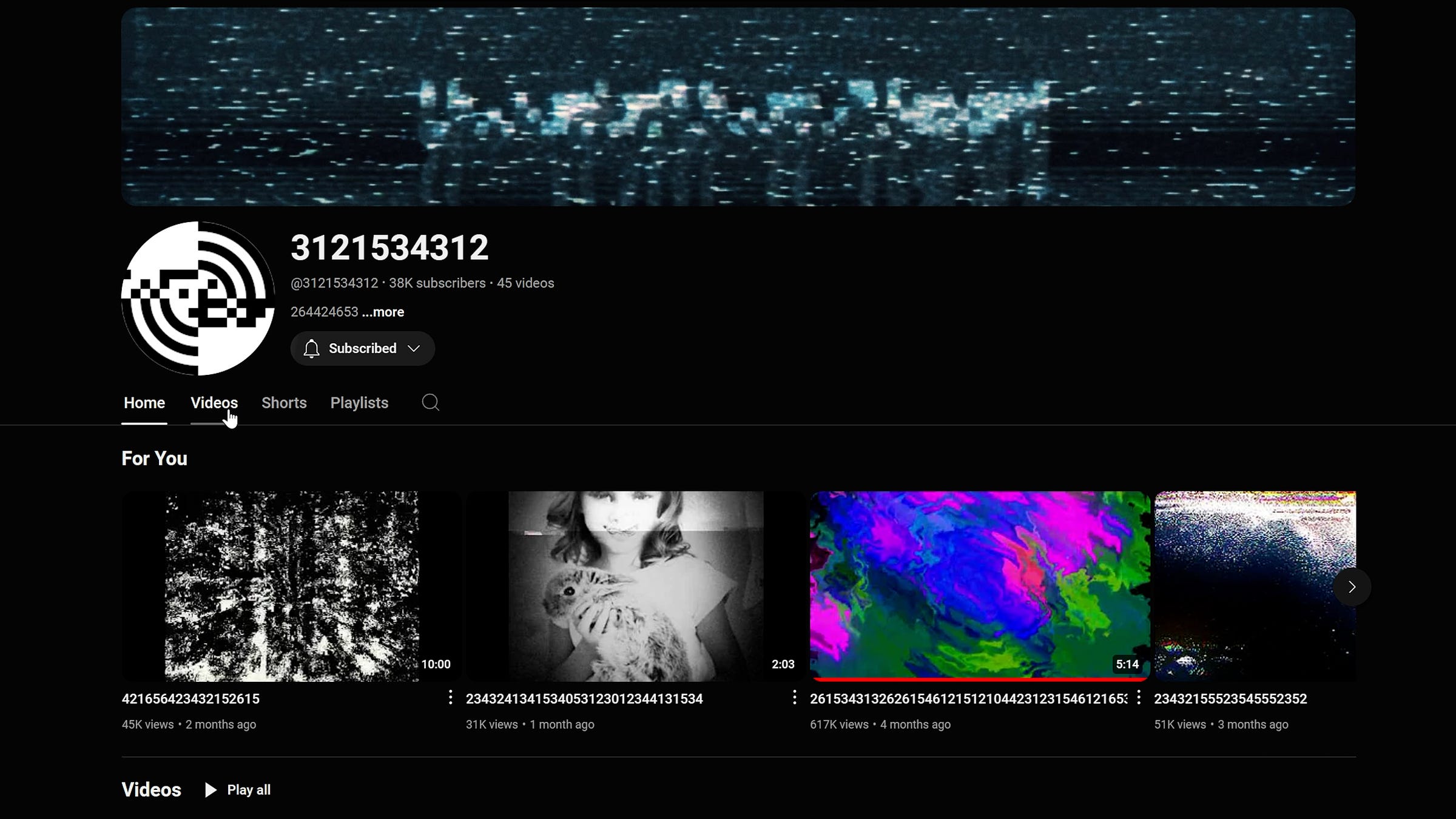






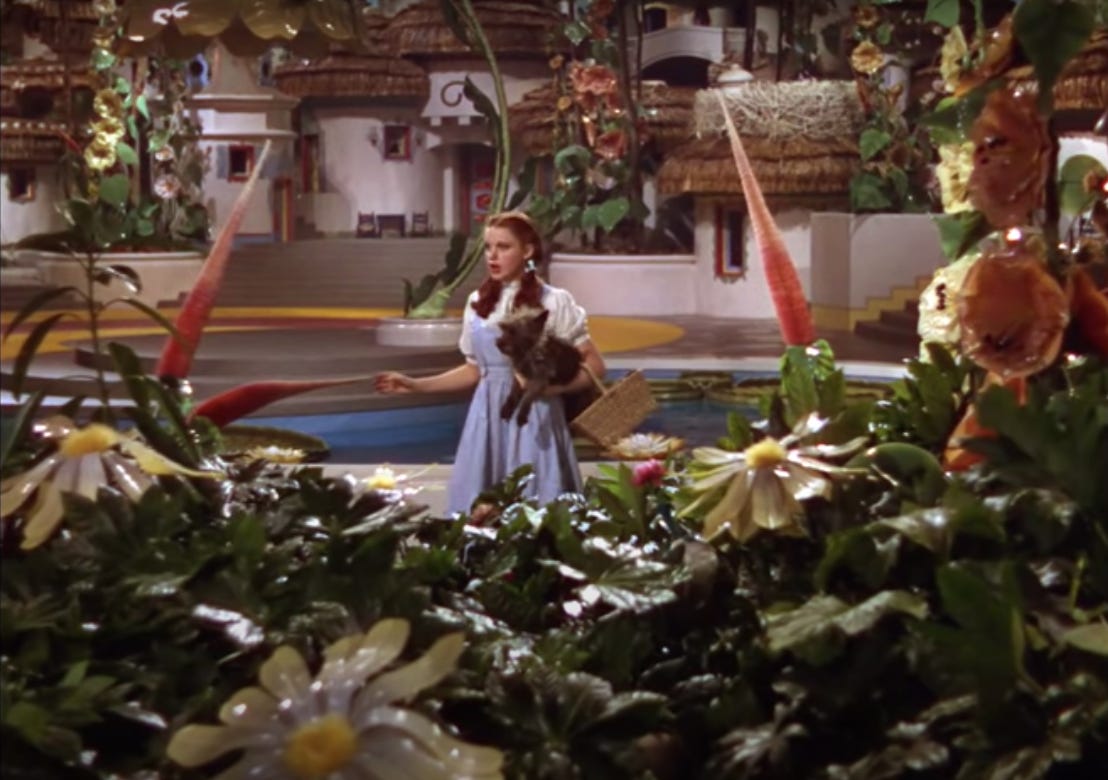
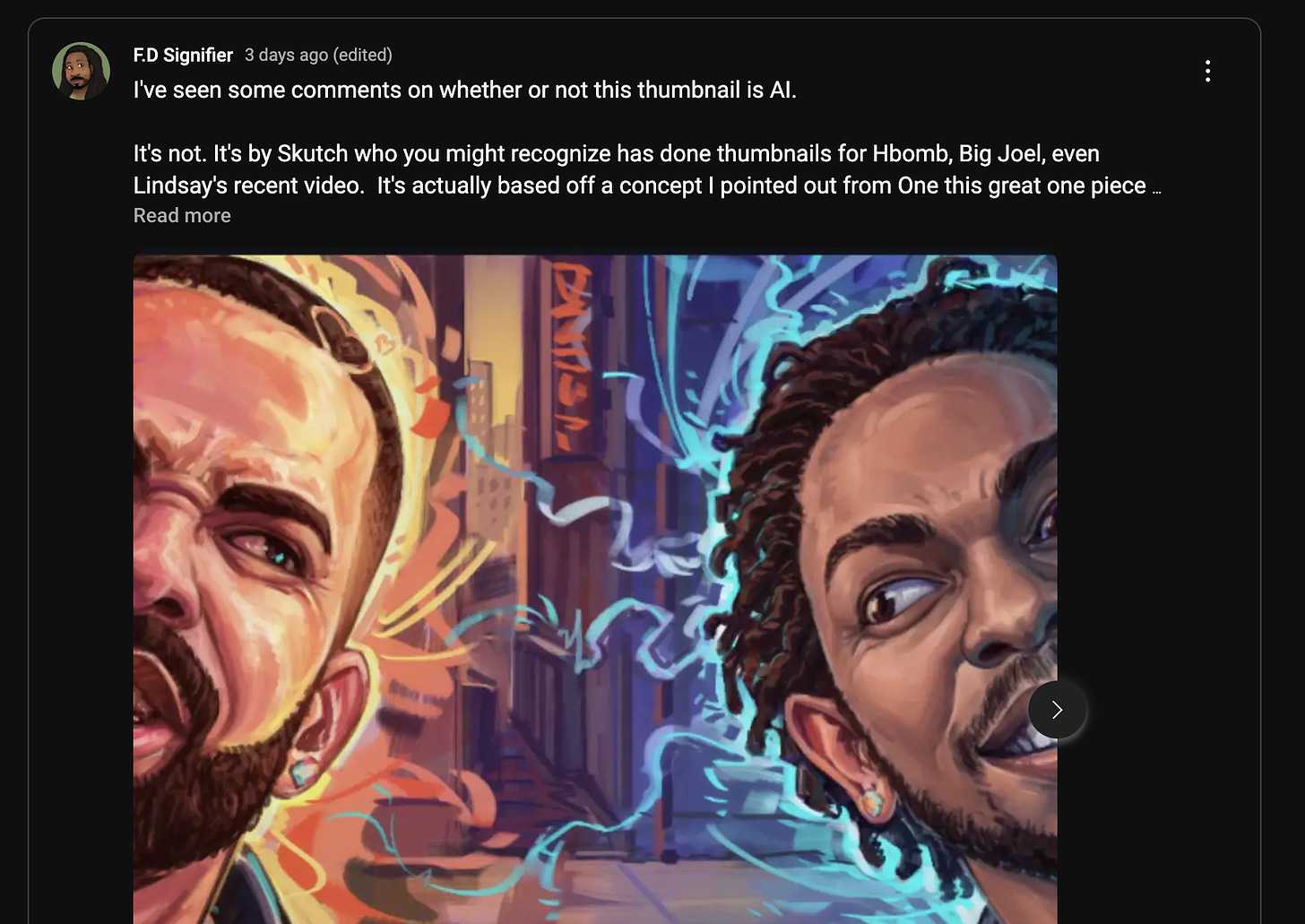
This is great, Thomas. I'm still chewing on it. But I've sent it to six or seven of my weirdest friends, all of whom masquerade as normal people in their successful, white-collar lives. So much of my working life is online and, because my day job is in marketing, I am so often running into AI and the algorithm (as a marketer for a business, I guess, I'm supposed to be figuring out how to ride or break it). Mostly, I'm numbed by it. But you broke through the numbness.
Here's an article from The Atlantic from last year that I loved and think you will enjoy. If you get a paywall, you can use 12ft.io (I think). Down with the machine(s).
https://www.theatlantic.com/magazine/archive/2023/03/tv-politics-entertainment-metaverse/672773/
This is the kind of shit the internet was made for imo. Ai art is going to be such a detriment to the internet as everything is going to assumed to be fake before much longer which will only serve to hurt all the real artists out there. Also, as someone who was recommended and watched that exact same "this video will find you" video a week ago with that curly haired chick in the woods, it was genuinely surprising to see you reference it here. Guess our algorithms are pretty similar, which tracks as you are one of my favorite cultural commentators on youtube.